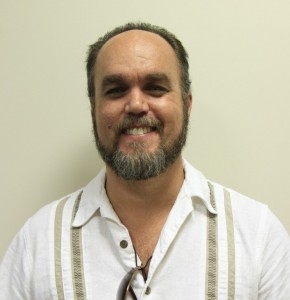 In prison I could often tell who would be a target for victimization. I developed this ability the old fashioned way, through observation. Predators abound in that world, so opportunities to witness their attacks were common. Whether it was robbery, rape, extortion or some other attempt to dominate those who were on the losing end had often had something in common.
In prison I could often tell who would be a target for victimization. I developed this ability the old fashioned way, through observation. Predators abound in that world, so opportunities to witness their attacks were common. Whether it was robbery, rape, extortion or some other attempt to dominate those who were on the losing end had often had something in common.
According to the convict code the victims were “weak.” This isn’t surprising, since the code was created by those with an interest in perpetuating such crimes. The truth wasn’t that the victims were weak though, instead I see now that they were different somehow. They didn’t fit in, didn’t make friends easily, and didn’t elicit much sympathy from bystanders.
The same dynamic is at play in bullying, whether in schools or the workplace, where the number one risk factor for being a victim is, again, being different. When we consider the nature of systems, which to some extent have to be invested in self perpetuation, this isn’t really surprising. Widely divergent groups, from yogic vegans to Rush Limbaugh fans, employ similar tactics to maintain group conformity and distance themselves from outsiders, though obviously these don’t always take the form of violence.
Keep these examples in mind, and reflect that our society is a group as well, and like other groups it works to maintain a status quo. And, again like other groups, some people are more “in” than others. Some people are more likely to be picked on. Consider the criminal justice system, including the portion that applies to juveniles. Blacks are much more likely to be incarcerated than whites, up to six times as likely in recent years. Other groups that come in for rough treatment include homosexuals, the poor, the uneducated and those suffering from mental illness.
Falling into any of these categories, or God help you more than one, increases your chances of being arrested, being convicted, getting a longer sentence (and being less likely to be diverted) and being less likely to be paroled. These same groups are impacted disproportionately by other ills as well, including homelessness and violence.
This kind of structure is so deep as to be almost invisible to the larger society, and largely passes unnoticed as anything other than the way things are. White collar criminals who steal millions often end up doing less time than petty thieves. Homeless users of crack do more time than celebrities snorting cocaine. On and on the imbalance and injustice goes, pointing to deep levels of hypocrisy not only in our criminal justice system, but in our society as a whole.
In bullying prevention work one of the most effective strategies is to engage bystanders. Most bullying behaviors occur in front of others, who may sometimes egg on the bully but more often just stand by and do nothing, relieved perhaps that they are not the victim. Bystanders may in fact blame the victim for being different, and sense somehow that they have brought their situation on themselves.
A little education can change this though. Just pointing out to people that victims don’t deserve what is happening to them, and encouraging bystanders to speak up or go get help can radically lower the incidence of bullying. Can something similar be accomplished in the larger realm of our society, where much of the behavior is unconscious and invisible to the unaffected? I think so, and I encourage you to spread the word.
You are an awesome role model for anyone coming from a prison background. I cite you often to my son who was denied parole this time around. I mention you in my work with individuals in counseling who are coming from prison. thank you for what you do and who you are. God Bless You.
Great article!